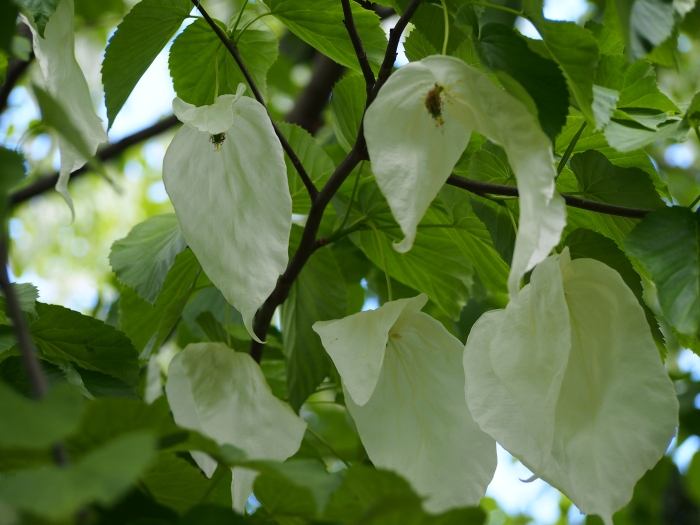Dove Tree
(Davidia involucrata)
Dove Tree (Davidia involucrata)
/
/

Agnieszka Kwiecień, Nova
CC BY-SA 4.0
Image By:
Agnieszka Kwiecień, Nova
Recorded By:
Copyright:
CC BY-SA 4.0
Copyright Notice:
Photo by: Agnieszka Kwiecień, Nova | License Type: CC BY-SA 4.0 | License URL: https://creativecommons.org/licenses/by-sa/4.0 | Uploader: Nova | Publisher: Wikimedia Commons | Title: Davidia_involucrata_var_vilmoriniana_2015-05-17_02.jpg | Notes: {{Information |Description=''Eucalyptus polyanthemos'' Schauer, Black Mountain, Canberra, ACT, 16 February 2011 |Source=[http://www.flickr.com/photos/dhobern/5448908263/ Eucalyptus polyanthemos] * Uploaded by [[User:berichard|ber



































Estimated Native Range
Summary
Davidia involucrata, commonly known as Dove Tree, is a deciduous tree native to woodland margins and mountainous regions of Southern China. It is a moderately fast-growing tree, reaching heights of 20–25 m (66–82 ft) with a broad, conical form. The leaves are alternate, heart-shaped (cordate), and resemble those of a linden tree. The Dove Tree is celebrated for its unique inflorescence, which consists of a purplish-red flower head encircled by a pair of large, showy white bracts, each 12–25 cm in length. These bracts, which perform the function of petals, create a striking display as they flutter in the wind, reminiscent of white doves or pinched handkerchiefs, particularly in late May when they are most prominent.
The Dove Tree is valued for its ornamental bracts and is often used in parks and large gardens. It is a popular ornamental tree due to its distinctive inflorescences and the visual interest they add to the landscape. The variety var. vilmoriniana is commonly cultivated in the West as it adapts well to local climates. The tree prefers full sun to part shade and requires medium amounts of water, thriving in soils with medium to fast drainage. While it is generally low-maintenance, it can be susceptible to leaf spot diseases and may require protection from strong winds due to its large bracts.CC BY-SA 4.0
The Dove Tree is valued for its ornamental bracts and is often used in parks and large gardens. It is a popular ornamental tree due to its distinctive inflorescences and the visual interest they add to the landscape. The variety var. vilmoriniana is commonly cultivated in the West as it adapts well to local climates. The tree prefers full sun to part shade and requires medium amounts of water, thriving in soils with medium to fast drainage. While it is generally low-maintenance, it can be susceptible to leaf spot diseases and may require protection from strong winds due to its large bracts.CC BY-SA 4.0
Plant Description
- Plant Type: Tree
- Height: 20-40 feet
- Width: 20-40 feet
- Growth Rate: Moderate
- Flower Color: White
- Flowering Season: Spring
- Leaf Retention: Deciduous
Growth Requirements
- Sun: Full Sun, Part Shade
- Water: Medium
- Drainage: Medium, Fast
Common Uses
Bird Garden, Showy Flowers
Natural Habitat
Woodland margins and mountainous regions of Southern China
Other Names
Common Names: Handkerchief Tree, Pocket Handkerchief Tree, Ghost Tree
Scientific Names: , Davidia involucrata, Davidia involucrata var. vilmoriniana, Davidia involucrata subsp. vilmoriniana, Davidia vilmoriniana, Davidia laeta, ia tibetana David,
GBIF Accepted Name: Davidia involucrata Baill.